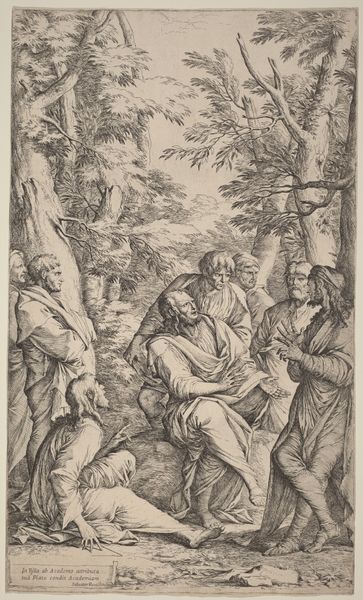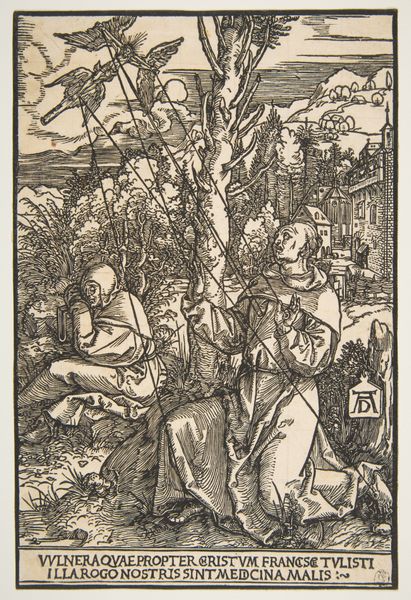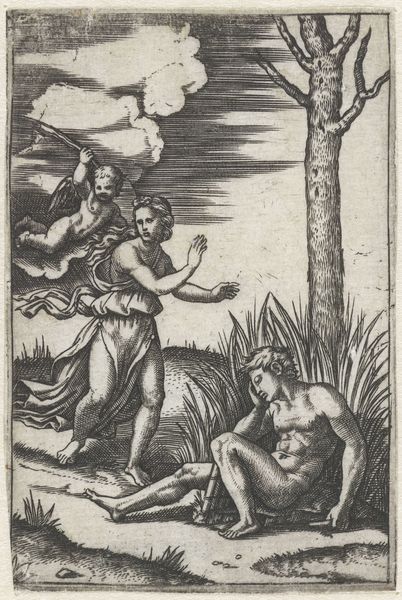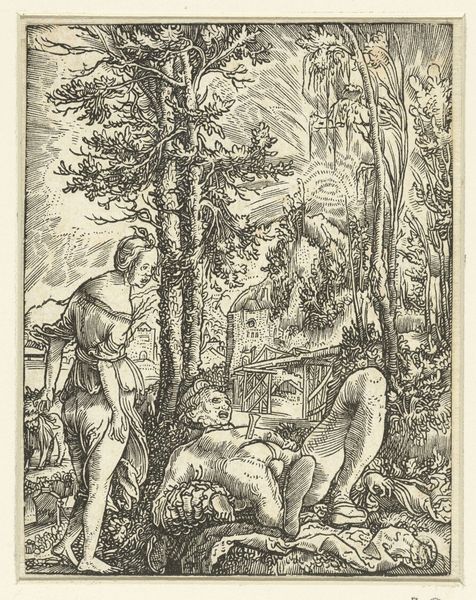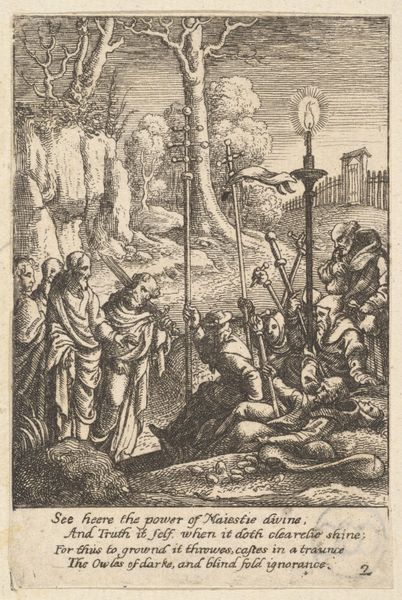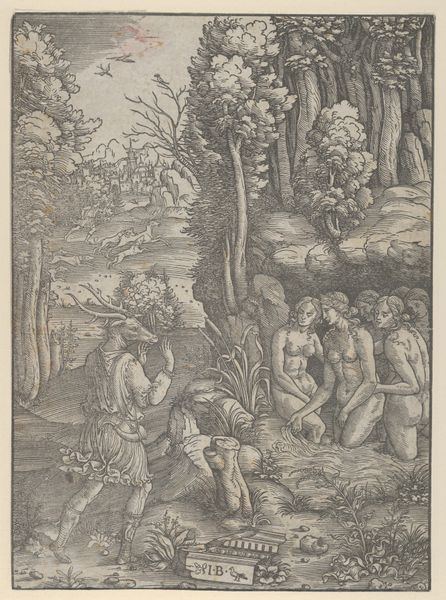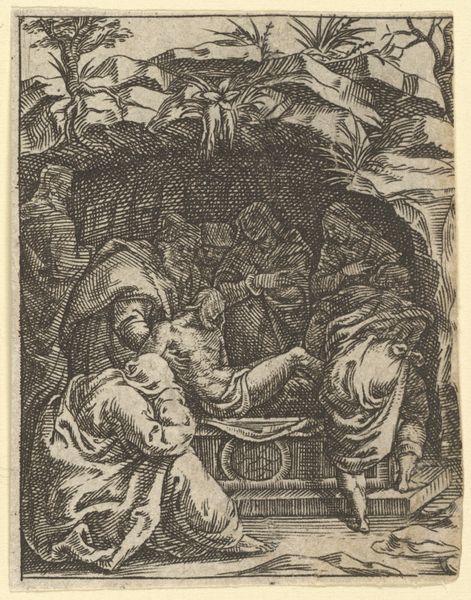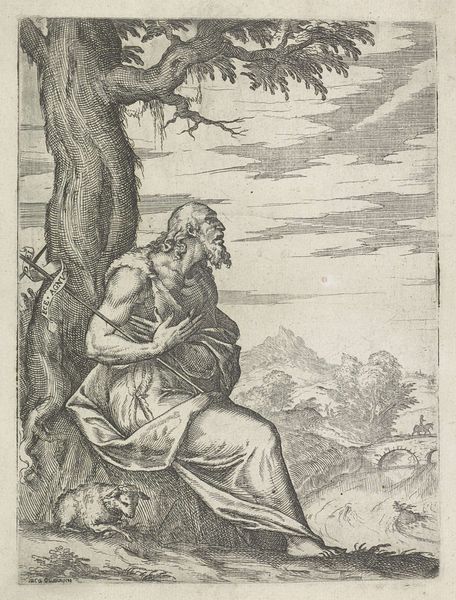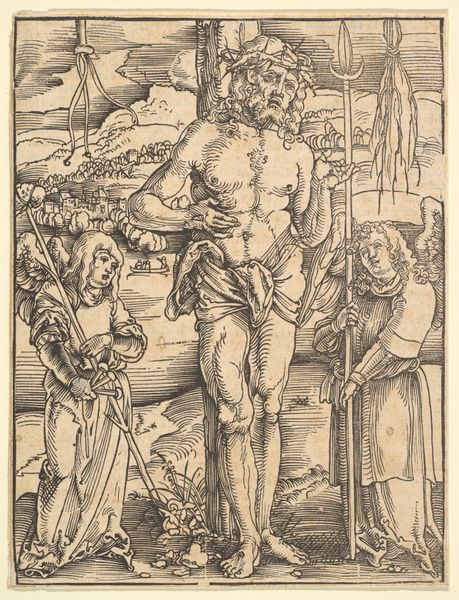
The Lamentation, from The Life of Christ 1511 - 1512
0:00
0:00
drawing, print, ink, woodcut
#
drawing
#
narrative-art
#
pen drawing
# print
#
pen illustration
#
pen sketch
#
figuration
#
ink line art
#
ink
#
cross
#
woodcut
#
history-painting
#
northern-renaissance
#
virgin-mary
#
christ
Dimensions: Sheet: 9 1/8 × 6 5/16 in. (23.2 × 16 cm)
Copyright: Public Domain
Hans Schäufelein created this woodcut, "The Lamentation," around 1510, as part of his "Life of Christ" series. The process begins with a block of wood, painstakingly carved to create a relief image. The fine lines you see are the result of Schäufelein's skilled use of knives and gouges, requiring both precision and physical effort. Ink would then be applied to the raised surface, and the image transferred to paper by pressing the block onto it. Look closely, and you can see how the material itself influences the final print. The linear quality, the stark contrast between black and white, all speak to the nature of the woodcut process. Consider the labor involved, from the felling of the tree to the final print. Woodcuts like this were relatively inexpensive to produce, making religious imagery more accessible to a wider audience, thus linking artmaking to the social and economic realities of the time. By understanding the materials and processes behind "The Lamentation," we can appreciate its cultural significance and the artist’s technical accomplishment.
Comments
No comments
Be the first to comment and join the conversation on the ultimate creative platform.
